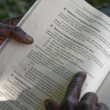New evidence is clear that wearing surgical masks reduces the risk of Covid-19 when worn consistently versus a lackadaisical approach where the use of face masks is not adhered to. The study shows wearing masks is safe and their effectiveness depends on the level of adherence.
According to the researchers, over 40 percent of the world’s population live in countries that mandated mask-wearing in public areas during the Covid-19 pandemic, and another 40 percent live in countries where universal mask norms prevailed absent a legal mandate.
However, increasing mask-wearing, either through mask promotion or mandates, has proven difficult, especially in low- and middle-income countries and in remote, rural areas.
Inspired by the growing body of scientific evidence that face masks can slow the spread of the disease and save lives, the researchers conducted a cluster-randomised controlled trial covering 342 126 adults in 600 villages in rural Bangladesh with the dual goals of (a) identifying strategies to encourage community-wide mask-wearing, and (b) tracking changes in symptomatic SARS-CoV-2 infections as a result of our intervention.
Titled, The Impact of Community Masking on COVID-19: A Cluster-Randomised Trial in Bangladesh, published on August 31, 2021, the study shows that mask promotion tripled mask usage and reduced symptomatic SARS-CoV-2 infections, demonstrating that promoting community mask-wearing can improve public health.
“Our intervention demonstrates a scalable and effective method to promote mask adoption and reduce symptomatic SARS-CoV-2 infections,” said the researchers who conducted their research in rural Bangladesh, from November 2020 to April 2021.
Researchers cross-randomised mask promotion strategies at the village and household level, which means instead of individuals randomly assigned to either receive the mask promotion intervention or not, whole villages were assigned.
“All intervention arms received free masks, information on the importance of masking, role modelling by community leaders, and in-person reminders for 8 weeks. The control group did not receive any interventions. Neither participants nor field staff was blinded to intervention assignment,” stated the study.
“Outcomes included symptomatic SARS-CoV-2 seroprevalence (primary) and prevalence of proper mask-wearing, physical distancing, and symptoms consistent with COVID-19 (secondary). Mask-wearing and physical distancing were assessed through direct observation at least weekly at mosques, markets, the main entrance roads to villages, and tea stalls.
“At five and nine weeks follow-up, we surveyed all reachable participants about COVID-related symptoms. Blood samples collected at 10-12 weeks of follow-up for symptomatic individuals were analysed for SARS-CoV-2 IgG antibodies.”
Then the Covid-19 rates of the different 600 villages were studied where in some of the villages, surgical masks were promoted and in others the use of cloth masks.
“There were 178 288 individuals in the intervention group and 163 838 individuals in the control group. The intervention increased proper mask-wearing from 13.3 percent in control villages (that is from 806 547 observations) to 42.3 percent in treatment villages (that is from 797 715 observations). This tripling of mask usage was sustained during the intervention period and two weeks after,” researchers said.
These results showed mask-wearing increased dramatically in the villages where it was promoted, as Covid-19 infections went down, especially those who wore surgical masks.
Although wearing of the cloth masks did not reduce the number of confirmed Covid-19 infections, the study noted that cloth masks reduced the number of people with Covid-19 symptoms significantly.
“Physical distancing increased from 24.1 percent in control villages to 29.2 percent in treatment villages. After five months, the impact of the intervention faded, but mask-wearing remained 10 percentage points higher in the intervention group,” said the study.
The study noted while vaccines may constrain the spread of Covid-19 in the long-term, it is unlikely that a substantial fraction of the population in low-and middle-income countries will have access to vaccines before the end of 2021, therefore: “Uncovering scalable and effective means of combating COVID-19 is thus of first-order policy importance.”








